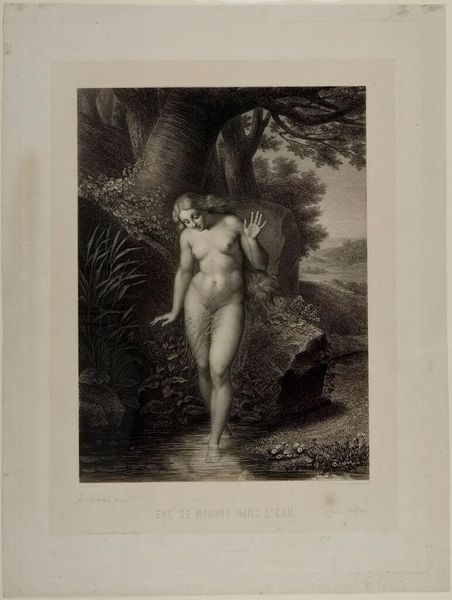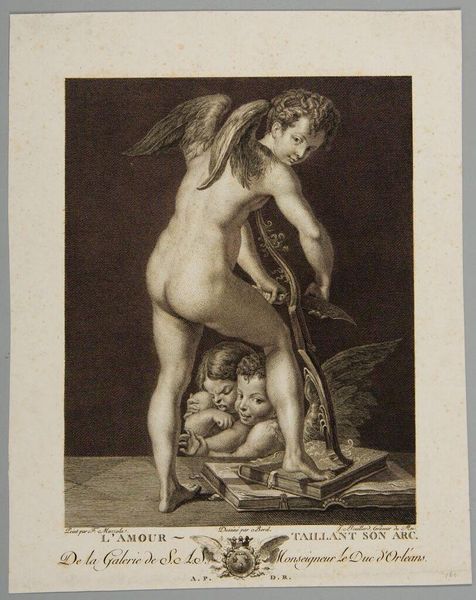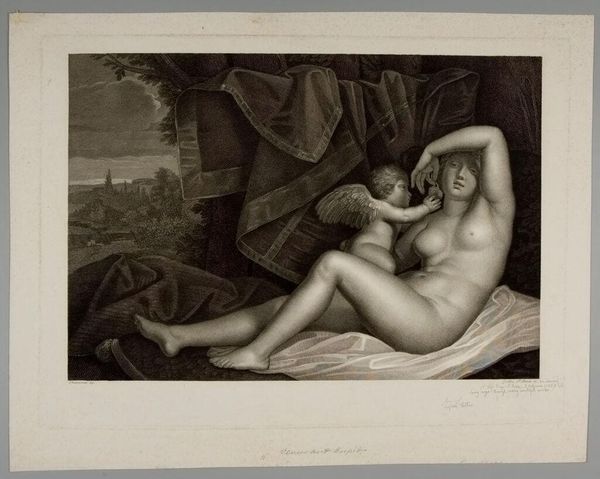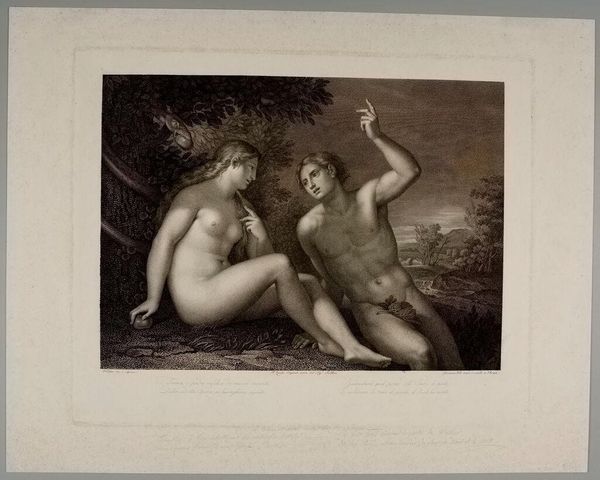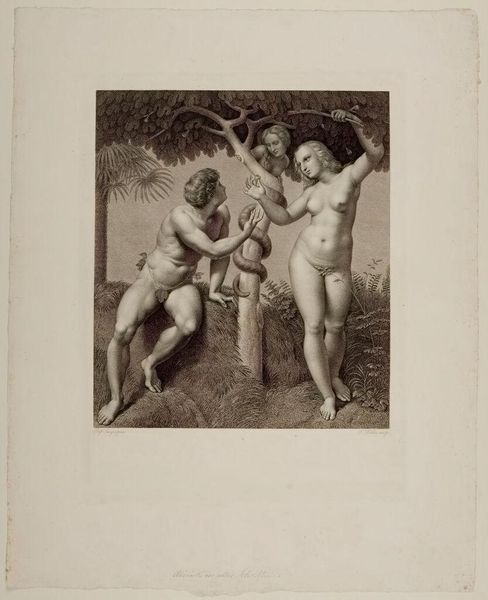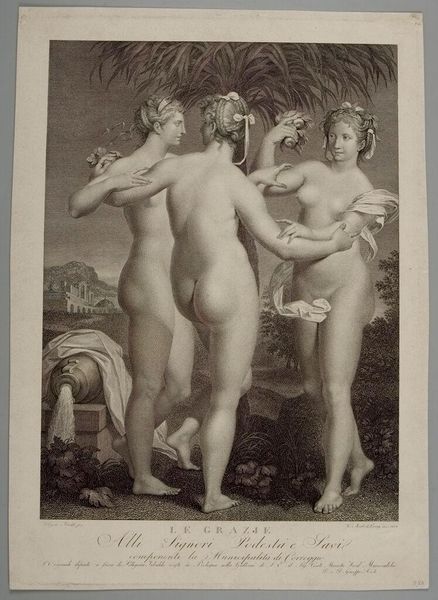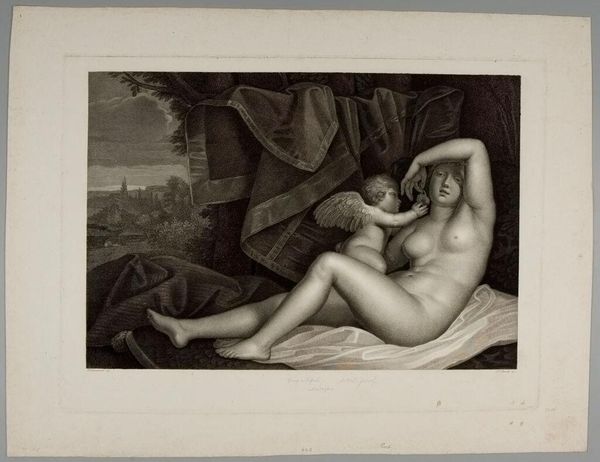
Copyright: CC0 1.0
Curator: This is Jean Marie Leroux's "Leda," a work from the Harvard Art Museums. The image presents a neoclassical interpretation of the famous myth. Editor: It strikes me as surprisingly tender, given the violence inherent in the narrative. The soft hatching and the gentle expressions really soften the drama. Curator: Absolutely. The swan, often a symbol of divine power and transformation, takes on a more ambiguous role here. He is entwined with Leda by flowers and seems almost protective. Editor: What do you make of the putti in the foreground? Their presence feels a little… celebratory, perhaps? As if the myth is a joyful union. Curator: Indeed. They could signify the children born from the union, perhaps anticipating Helen and Clytemnestra's roles in the Trojan War—seeds of both beauty and destruction. Editor: Viewing this work now, it's hard to ignore the problematic power dynamics at play. The artist, I feel, does not confront these issues directly but dances around them with allegorical figures and soft lines. Curator: I agree. Despite its classical idealism, the piece provides a lens through which we can examine the enduring power and complex legacy of such stories.
Comments
No comments
Be the first to comment and join the conversation on the ultimate creative platform.


